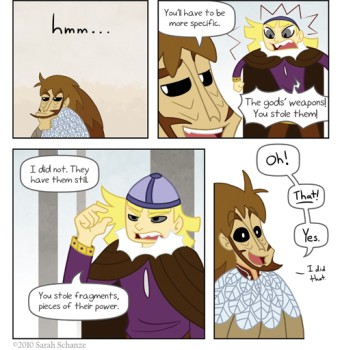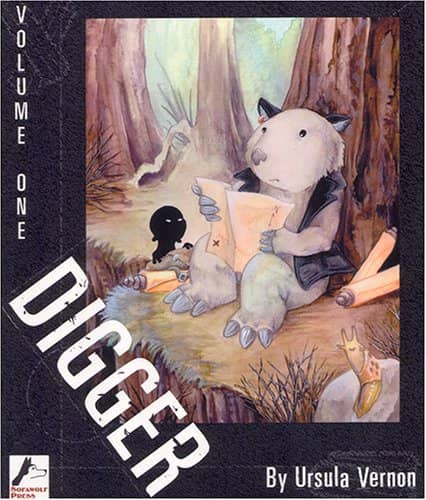Spotlight on Fantasy Webcomics: Off to See the Wizard in Nakesake

Webcomics and Kickstarter have come into their own at similar times. Kickstarter has been debated by PW and Tor.com and other places as a publisher/major funder of the indie comics industry. (In 2012, Todd Allen at PW suggested in 2012 that, by cash totals, Kickstarter could be considered the #2 comics publisher in America; Steven Padnick at Tor.com rebutted that they’re a funding source but not a publisher at all. Which is more than semantics, but I think neither would argue against how important Kickstarter has become for the comics industry.) What’s exciting about Kickstarter and other crowdfunding sources is that — like digital printing and web publishing in general — it gives a sense of immediacy and connection between readers and creators. Namesake is one of the webcomics that I follow, and I was excited to contribute to their Kickstarter to get my very own print versions of the first two volumes of the comic. And I was even more excited to pick those books up in person last weekend in New York, at a delightful meet-up in which I got to meet writer Megan Lavey-Heaton, Yamino of Sister Claire, and a number of writers and artists in various stages of publication. It was a fantastic cross-section of geekdom, with comments being bandied across the table about such topics as Doctor Who, Spiderman, and even My Little Pony: Friendship is Magic.
So if it is with a rosy demeanor that I write about the excellent webcomic Namesake, I’ll be the first to divulge that I’m personally invested. (And for the rest of the full disclosure, Megan Lavey-Heaton backed my Kickstarter to self-publish the third novel in an otherwise publisher-abandoned trilogy. The admiration goes both ways.)


